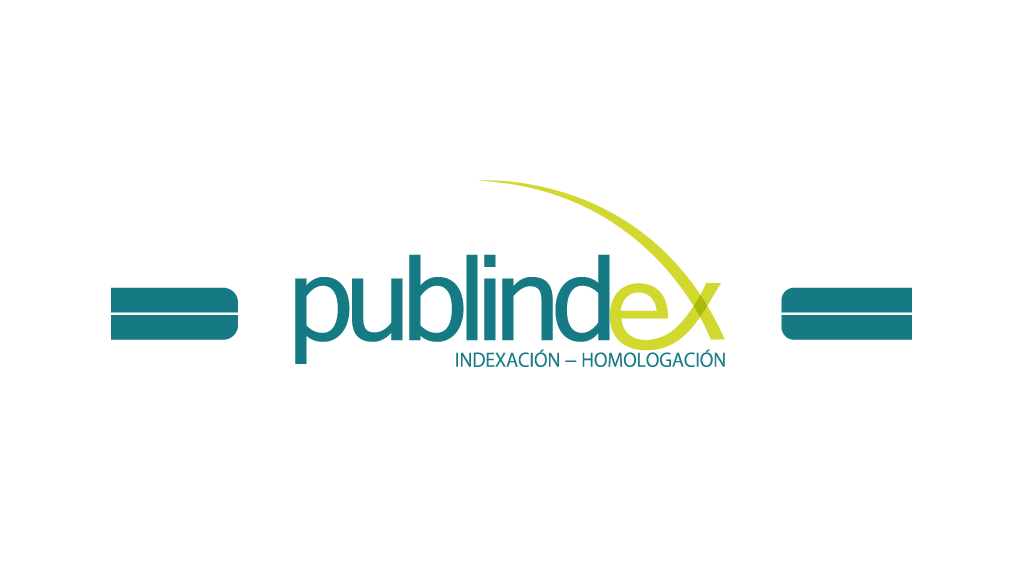
This work is licensed under a Creative Commons Attribution-NonCommercial-ShareAlike 4.0 International License.
Authors who publish in this journal agree to the following terms:
Acta Colombiana de Psicología complies with international intellectual property and copyright laws, and particularly with Article No. 58 of the Political Constitution of Colombia, Law No. 23 of 1982, and the Agreement No. 172 of September 30, 2010 (Universidad Católica de Colombia Intellectual Property Regulation).
Authors retain their copyright and grant to the Acta Colombiana de Psicología the right of first publication, with the work registered under Creative Commons attribution license, which allows third parties to use the published material, provided they credit the authorship of the work and the first publication in this Journal.
Abstract
Positive empathy implies an expression of happiness or joy, resulting from understanding the positive emotional condition of another person and sharing it. The aim of this research was to evaluate the psychometric properties of the adaptation of the Dispositional Positive Empathy Scale in the Argentine adolescent population. The instrument on which the adaptation was made consists of seven items, originally in English. The sample (n = 303) was made up of 95 males (31 %) and 208 females
(69 %), aged between 11 and 17 years old, high school students. Construct validity was studied by performing a confirmatory factor analysis and the invariance of the scale in relation to the sex and age of the participants. Convergent validity was verified with prosocial behavior towards various goals, differences in levels of positive empathy between sexes and across different age groups, and reliability levels (Ω = .78) were tested. The results indicate that the scale is one-dimensional, coinciding with
the original version. A good fit of the model to the data was found (cfi = .98; tli = .96; nnfi = .96; nfi = .95; rmsea = .05). The model remained constant across both sexes and age groups. Positive empathy was related to prosociality and differences were found according to sex and age. The findings show that the psychometric characteristics of the adaptation of the Positive Empathy Dispositional Scale to the Argentine adolescent population are satisfactory.
Keywords

References
Andreoni, J., & Miller, J. (2002). Giving according to garp: An experimental test of the consistency of preferences for altruism. Econometrica, 70(2), 737-753. https://doi.org/10.1111/1468-0262.00302
Batson, C. D., & Shaw, L. L. (1991). Evidence for altruism: Toward a pluralism of prosocial motives. Psychological Inquiry, 2(2), 107-122. https://doi.org/10.1207/s15327 965pli0202_1
Batson, C. D., Batson, J. G., Slingsby, J. K., Harrell, K. L., Peekna, H. M., & Todd, R. M. (1991). Empathic joy and the empathy-altruism hypothesis. Journal of Personality and Social Psychology, 61(3), 413-426. https://doi.org/10.1037/0022-3514.61.3.413
Brebner, J. (2003). Gender and emotions. Personality and Individual Differences, 34(3), 387-394. https://doi. org/10.1016/S0191-8869(02)00059-4 Byrne, B. M. (2010). Structural equation modeling with amos: Basic concepts, applications, and programming (2nd ed.). Routledge. https://doi.org/10.4324/9780203805534
Chaplin, T. M., & Aldao, A. (2013). Gender differences in emotion expression in children: A meta-analytic review. Psychological Bulletin, 139(4), 735-765. https://doi.org/10.1037/a0030737
Clinton, A. J., & Pollini, R. A. (2021). Using positive empathy interventions to reduce stigma toward people who inject drugs. Frontiers in Psychology, 12, Article 616729. https://doi.org/10.3389/fpsyg.2021.616729
Cohn, M. A., Fredrickson, B. L., Brown, S. L., Mikels, J. A., & Conway, A.M. (2009). Happiness unpacked: Positive emotions increase life satisfaction by building resilience. Emotion, 9(3), 361-368. https://doi.org/10.1037/a0015952
Davis, M. H. (1980). A multidimensional approach to individual differences in Empathy. jsas Catalog of Selected Documents in Psychology, 10, 85. https://www.uv.es/ friasnav/Davis_1980.pdf
Davis, M. H. (1983). Measuring individual-differences in empathy: Evidence for a multidimensional approach. Journal of Personality and Social Psychology, 44(1), 113-126. https://doi.org/10.1037/0022-3514.44.1.113
De Vignemont, F., & Singer, T. (2006). The empathic brain: How, when and why? Trends in Cognitive Sciences, 10(10), 435-441. https://doi.org/10.1016/j. tics.2006.08.008
De Weid, M., Goudena, P. P., & Matthys, W. (2005). Empathy in boys with disruptive behavior disorders. Journal of Child Psychology and Psychiatry, 46(8), 867-880. https://doi.org/10.1111/j.1469-7610.2004.00389.x
De Wied, M., Van Boxtel, A., Zaalberg, R., Goudena, P. P., & Matthys, W. (2006). Facial emg responses to Dynamic emotional facial expressions in boys with disruptive behavior disorders. Journal of Psychiatric Research, 40(2), 112-121. https://doi.org/10.1016/j. jpsychires.2005.08.003
Decety, J., & Jackson, P. L. (2004). The functional architecture of human empathy. Behavioral and Cognitive Neuroscience Reviews, 3(2), 71-100. https://doi.org/10.1177/1534582304267187
Decety, J., & Lamm, C. (2006). Human empathy through the lens of social neuroscience. The Scientific World Journal, 6, Article 280363, 1146-1163. http://dx.doi.org/10.1100/ tsw.2006.221
Domínguez-Lara, S. A. D., & Merino-Soto, C. M. (2015a). ¿Por qué es importante reportar los intervalos de confianza del coeficiente alfa de Cronbach? Revista Latinoamericana de Ciencias Sociales, Niñez y Juventud, 13(2), 1326-1328. https://revistaumanizales.cinde.org. co/rlcsnj/index.php/Revista-Latinoamericana/article/download/2030/629
Domínguez-Lara, S. A. D., & Merino-Soto, C. M. (2015b). Sobre el reporte de confiabilidad del Clarp-tdah, de Salamanca (2010). Revista Latinoamericana de Ciencias Sociales, Niñez y Juventud, 13(2), 1316-1319.
Duan, C. (2000). Being empathic: The role of motivation to empathize and the nature of target emotions. Motivation and Emotion, 24(1), 29-49. https://doi.org/10.1023/A:1005587525609
Eisenberg, N. (2000). Empathy and Sympathy. En M. Lewis & J. M. Haviland-Jones (Eds.), Handbook of Emotions (2a ed., pp. 677-691). Guilford.
Eisenberg, N., Fabes, R. A., & Spinrad, T. L. (2006). Prosocial development. In W. Damon & N. Eisenberg (Eds.), Handbook of child psychology: Social, emotional, and personality development (6th ed., Vol. 3., pp. 646-718). John Wiley.
Eisenberg, N., & Lennon J. (1983). Sex differences in empathy and related capacities. Psychological Bulletin, 94(1), 100-131. https://doi.org/10.1037/0033-2909.94.1.100
Escobedo Portillo, M. T., Hernández Gómez, J. A., Estebané Ortega, V., & Martínez Moreno, G. (2016). Modelos de ecuaciones estructurales: características, fases, construcción, aplicación y resultados. Ciencia & Trabajo, 18(55), 16-22. http://dx.doi.org/10.4067/ S0718-24492016000100004
Ferrando, P. J., & Anguiano-Carrasco, C. (2010). El análisis factorial como técnica de investigación en psicología. Papeles del Psicólogo, 31(1), 18-33. https://www.pape lesdelpsicologo.es/pdf/1793.pdf
Feshbach, N. D., & Feshbach, S. (1969). The relationship between empathy and aggression in two age groups. Developmental Psychology, 1, 102-107. https://doi.org/10.1037/H0027016
Fredrickson, B. L. (2001). The role of positive emotions in positive psychology: The broaden-and-build theory of positive emotions. American Psychologist, 56(3), 218- 226. https://doi.org/10.1037/0003-066X.56.3.218
Fredrickson, B. L., Cohn, M. A., Coffey, K. A., Pek, J., & Finkel, S. M. (2008). Open hearts build lives: Positive emotions, induced through loving-kindness meditation, build consequential personal resources. Journal of Personality and Social Psychology, 95(5), 1045-1062. https://doi.org/10.1037/a0013262
Gable, S. L., Reis, H. T., Impett, E. A., & Asher, E. R. (2004). What do you do when things go right? The intrapersonal and interpersonal benefits of sharing positive events. Journal of Personality and Social Psychology, 87(2), 228-245. https://doi.org/10.1037/0022-3514.87.2.228
Gable, S. L., Gonzaga, G. C., & Strachman, A. (2006). Will you be there for me when things go right? Supportive responses to positive event disclosures. Journal of Personality and Social Psychology, 91(5), 904-917. https://doi.org/10.1037/0022-3514.91.5.904
Gable, S. L., & Reis, H. T. (2010). Good News! Capitalizing on positive events in an interpersonal context. En M. P. Zanna & Olson, J. M. (Eds.), Advances in Experimental Social Psychology (pp. 195-257). Elsevier. https://doi.org/10.1016/S0065-2601(10)42004-3
Ganegoda, D. B., & Bordia, P. (2019). I can be happy for you, but not all the time: A contingency model of envy and positive empathy in the workplace. Journal of Applied Psychology, 104(6), 776-795. https://doi.org/10.1037/apl0000377
Gerbing, D. W., & Anderson J. C. (1988). An update paradigm for scale development incorporating unidimentionality and its assessment. Journal of Marketing Research, 25(2), 186-192. https://doi.org/10.1177/002224378802500207
Goss-Sampson, M. (2019). Statistical analysis in jasp: A guide for students (2a ed.). University of Greenwich. https://gala.gre.ac.uk/id/eprint/25585/
Hambleton, R. (1993). Translating achievement tests for use in cross-national studies. European Journal of Psychological Assessment, 9(1), 57-68. https://eric. ed.gov/?id=ED358128
Hambleton, R. (1994). Guidelines for adapting educational and psychological test: A progress report. European Journal of Psychological Assessment, 10, 229-244. https://files.eric.ed.gov/fulltext/ED399291.pdf
Hambleton, R. K. (1996). Adaptación de test para su uso en diferentes idiomas y culturas: fuentes de error, posibles soluciones y directrices prácticas. En J. Muníz (Ed.), Psicometría (pp. 209-238). Universitas.
Hart, D., & Fegley, S. (1995). Prosocial behavior and caring in adolescence: Relations to self-understanding and social judgment. Child Development, 66(5), 1346-1359. https://doi.org/10.2307/1131651
Hernández Sampieri, R., Fernández Collado, C., & Baptista Lucio, P. (2014). Metodología de la Investigación (6a ed.). McGraw-Hill; Interamericana Editores, S.A.
Hicks, A. M., & Diamond, L. M. (2008). How was your day? Couples’ affect when telling and hearing daily events. Personal Relationships, 15(2), 205-228. https://doi.org/10.1111/j.1475-6811.2008.00194.x
Jansen, E. (2021). Your success at work brings me joy or depression: Factors influencing the affective experiences of positive empathy and envy in meeting co-worker’s success [Tesis de maestría, University of Twente]. http://essay.utwente.nl/85567/1/Jansen%20MSc%20COM%20 Behavioural%20Management%20and%20Social%20 sciences.pdf
Jiménez Martínez, J. (2017). Crianza, prosocialidad y relaciones entre los pares en la adolescencia. Factores implicados en los comportamientos antisociales [Tesis doctoral, Universitat de València]. https:// www.educacion.gob.es/teseo/imprimirFicheroTesis. do?idFichero=q%2BYBbnBLDP8%3D
Kline, R. B. (2011). Principles and practice of structural equation modeling (3a ed.). The Guilford Press.
Lennon, R., Eisenberg, N., & Carroll, J. (1983). The assessment of empathy in early childhood. Journal of Applied Developmental Psychology, 4(3), 295-302. https://doi.org/10.1016/0193-3973(83)90024-2
Light, S. N., Coan, J. A., Zahn-Waxler, C., Frye, C., Goldsmith, H. H., & Davidson, R. J. (2009). Empathy is associated with dynamic change in prefrontal brain electrical activity during positive emotion in children. Child Development, 80(4), 1210-1231. https://doi.org/10.1111/j.1467-8624.2009.01326.x
Light, S. N., Moran, Z. D., Zahn-Waxler, C., & Davidson, R. J. (2019). The measurement of positive valence forms of empathy and their relation to anhedonia and other depressive symptomatology. Frontiers in Psychology, 10, Article 815. https://doi.org/10.3389/fpsyg.2019.00815
Llorca, A., Malonda, E., & Samper, P. (2017). Prosocial reasoning and emotions in young offenders and non-offenders. European Journal of Psychology Applied to Legal Context, 9(2), 65-73. https://doi.org/10.1016/j.ejpal.2017.01.001
Liu, J., Qiao, X., Dong, F., & Raine, A. (2018). The Chinese version of the cognitive, affective, and somatic empathy scale for children: Validation, gender invariance and associated factors. PLoS one, 13(5), Article e0195268. https://doi.org/10.1371/journal.pone.0195268
McNeish, D. (2018). Thanks coefficient alpha, we’ll take it from here. Psychological Methods, 23(3), 412-433. http://dx.doi.org/10.1037/met0000144
Mesurado, B. (2018, 6-9 de agosto). El rol de la empatía positiva y negativa en la conducta prosocial [Video]. YouTube. https://www.youtube.com/watch?v=vAWfbcGoqqg
Mesurado, B., & Richaud, M. C. (2017). The relationship between parental variables, empathy and prosocial-flow with prosocial behavior toward strangers, friends, and family. Journal of Happiness Studies, 18(3), 843-860. https://doi.org/10.1007/s10902-016-9748-7
Mesurado, B., Guerra, P., De Sanctis, F., & Rodriguez, L. M. (2019). Validation of the spanish version of the prosocial behavior toward different targets scale. International Social Work, 65(1), 175-186. https://doi.org/10.1177/0020872819858738
Mitchell, J. P. (2009). Inferences about mental states. Philosophical Transantions of the Royal Society B Biological Sciences, 364(1521), 1309-1316. http://doi.org/10.1098/rstb.2008.0318
Montague, P. R., Berns, G. S., Cohen, J. D., McClure, S. M., Pagnoni, G., Dhamala, M., Wiest, M. C., Karpov, I., King, R. D., Apple, N., & Fisher, R. (2002). Hyperscanning: Simultaneous fmri during linked social interactions. NeuroImage, 16(4), 1159-1164. https://doi.org/10.1006/ nimg.2002.1150
Morelli, S. A., Lee, I. A., Arnn, M. E., & Zaki, J. (2015). Emotional and instrumental support provision interact to predict well-being. Emotion, 15(4), 484-493. http:// dx.doi.org/10.1037/emo0000084
Morelli, S. A., & Lieberman, M. D. (2013). The role of automaticity and attention in neural processes underlying empathy for happiness, sadness, and anxiety. Frontiers in Human Neuroscience, 7, Article 160. https://doi.org/10.3389/fnhum.2013.00160
Morelli, S. A., Lieberman, M. D., Telzer, E. H., & Zaki, J. (En revisión). Positive empathy: Its structure and relation to prosociality, social connection, and well-being.
Morelli, S. A., Lieberman, M. D., & Zaki, J. (2015). The emerging study of positive empathy. Social and Personality Psychology Compass, 9(2), 57-68. https://doi.org/10.1111/spc3.12157
Morelli, S. A., Rameson, L. T., & Lieberman, M. D. (2014). The neural components of empathy: Predicting daily prosocial behavior. Social Cognitive and Affective Neuroscience, 9(1), 39-47. https://doi.org/10.1093/scan/nss088
Morelli, S. A., Sacchet, M. D., & Zaki, J. (2015). Common and distinct neural correlates of personal and vicarious reward: A quantitative meta-analysis. NeuroImage, 112, 244-253. https://doi.org/10.1016/j.neuroimage.2014.12.056
Nezlek, J. B., Feist, G. J., Wilson, F. C., & Plesko, R. M. (2001). Day-to-day variability in empathy as a function of daily events and mood. Journal of Research in Personality, 35(4), 401-423. https://doi.org/10.1006/jrpe.2001.2332
Padilla-Walker, L. M., & Christensen, K. J. (2011). Empathy and self-regulation as mediators between parenting and adolescents’ prosocial behavior toward strangers, friends, and family. Journal of Research on Adolescence, 21(3), 545-551. https://doi. org/10.1111/j.1532-7795.2010.00695.x
Peterson, C., & Seligman, M. E. P. (2004). Character strengths and virtues: A classification and handbook. Oxford University Press; American Psychologicgal Association.
Preston, S. D., & De Waal, F. B. M. (2002). Empathy: Its ultimate and proximate bases. Behavioral and Brain Sciences, 25(1), 1-20. https://doi.org/10.1017/S0140525X02000018
Reis, H. T., Smith, S. M., Carmichael, C. L., Caprariello, P. A., Tsai, F.-F., Rodrigues, A., & Maniaci, M. R. (2010). Are you happy for me? How sharing positive events with others provides personal and interpersonal benefits. Journal of Personality and Social Psychology, 99(2), 311-329. https://doi.org/10.1037/a0018344
Roberts, W., & Strayer, J. (1996). Empathy, emotional expressiveness, and prosocial behavior. Child Development, 67(2), 449-470. https://doi.org/10.2307/1131826
Rodríguez, M. N., & Ruiz, M. A. (2008). Atenuación de la asimetría y de la curtosis de las puntuaciones observadas mediante transformaciones de variables: incidencia sobre la estructura factorial. Psicológica: Revista de Metodología y Psicología Experimental, 29(2), 205- 227. https://dialnet.unirioja.es/servlet/articulo?codigo= 2718372
Roth-Hanania, R., Davidov, M., & Zahn-Waxler, C. (2011). Empathy development from 8 to 16 months: Early signs of concern for others. Infant Behavior & Development, 34(3), 447-458. https://doi.org/10.1016/j. infbeh.2011.04.007
Ruiz, M. A., Pardo, A., & San Martín, R. (2010). Modelos de ecuaciones estructurales. Papeles del Psicólogo, 31(1), 34-45. https://www.papelesdelpsicologo.es/pdf/1794.pdf Sallquist, J., Eisenberg, N., Spinrad, T. L., Eggum, N. D., & Gaertner, B. M. (2009). Assessment of preschoolers’ positive empathy: Concurrent and longitudinal relations with positive emotion, social competence, and sympathy. The Journal of Positive Psychology, 4(3), 223-233. https://doi.org/10.1080/17439760902819444
Smith, K. D., Keating, J. P., & Stotland, E. (1989). Altruism reconsidered: The effect of denying feedback on a victim’s status to empathic witnesses. Journal of Personality and Social Psychology, 57(4), 641-650. https://doi.org/10.1037/0022-3514.57.4.641
Stern, J. A., & Cassidy, J. (2018). Empathy from infancy to adolescence: An attachment perspective on the development of individual differences. Developmental Review, 47, 1-22. https://doi.org/10.1016/j.dr.2017.09 .002
Strayer, J. (1980). A naturalistic study of empathic behaviors and their relation to affective states and perspective taking skills in preschool children. Child Development, 51(3), 815-822. https://doi.org/10.2307/1129469
Strayer, J. (1993). Children’s concordant emotions and cognitions in response to observed emotions. Child Development, 64(1), 188-201. https://doi.org/10.2307/ 1131445
Telle, N. T., & Pfister, H. R. (2016). Positive Empathy and Prosocial Behavior: A neglected link. Emotion Review, 8(2), 154-163. https://doi. org/10.1177/1754073915586817
Vaish, A., Carpenter, M., & Tomasello, M. (2009). Sympathy through affective perspective taking and its relation to prosocial behavior in toddlers. Developmental Psychology, 45(2), 534-543. https://doi.org/10.1037/a0014322
Wallace, B. A., & Shapiro, S. L. (2006). Mental balance and well-being: Building bridges between Buddhism and western psychology. American Psychologist, 61(7), 690- 701. https://doi.org/10.1037/0003-066X.61.7.690
Yue, T., Wei, J., Huang, X., & Jiang, Y. (2016). Psychometric properties of the Chinese version of the Positive Empathy Scale among undergraduates. Social Behavior and Personality: An International Journal, 44(1), 131-138. https://doi.org/10.2224/sbp.2016.44.1.131
Zahn-Waxler, C., Radke-Yarrow, M., Wagner, E., & Chapman, M. (1992). Development of concern for others. Developmental Psychology, 28(1), 126-136. https://doi.org/10.1037/0012-1649.28.1.126
Zhou, Q., Eisenberg, N., Losoya, S. H., Fabes, R. A., Reiser, M., Guthrie, I. K., Murphy, B. C., Cumberland, A. J., & Shepard, S. A. (2002). The relations of parental warmth and positive expressiveness to children’s empathy related responding and social functioning: A longitudinal study. Child Development, 73(3), 893-915. https://doi.org/10.1111/1467-8624.00446


































